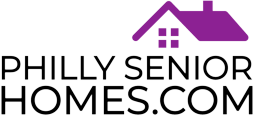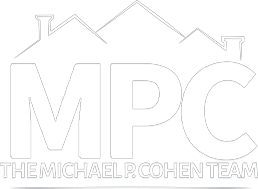Written by: Kat Sarmiento

Showing properties in person and putting up a “For Sale” sign in the front yard might’ve worked before, but traditional methods simply won’t work in today’s competitive market. According to the Association of Real Estate License Law Officials (ARELLO), more than 3 million people have real estate licenses in the U.S. That means you’ll have to stand out to sell.
One of the modern tools you can benefit from is email. Through email marketing, you can connect with prospects and nurture your relationships with current clients. If you’re new to the email marketing world, don’t worry. In this post, we’ve put together a few tips on real estate marketing so you can sell your properties in no time:
1. Collect your clients’ emails
A real estate email list compiles the email addresses of current clients and leads. Without it, you wouldn’t know who to email. While you can buy a ready-made email list, this is far from the best way to do it. Always aim to grow your email list organically, otherwise, you might end up sending emails to people who don’t want them.
Creating a sign-up page on your website is one way to gain organic subscribers. Be sure to create an email magnet — this is something that subscribers get for giving you their emails. For example, you could encourage people to sign up in exchange for a free coupon. Alternatively, you could opt for the traditional route by collecting emails at in-person events such as property viewings.
2. Segment your contacts
One of the worst mistakes you can make is sending your entire email list the same emails. This is because your emails should be tailored to your subscribers. If you fail to provide value to your recipient, chances are they’ll delete your email the moment they open it.
Once you’ve made your email list, segment your contacts into more specific groups such as age, location, budget, family size, and other criteria. In this way, you can send them emails that suit their situation. For instance, a client with children would be best served with content about the top-rated schools in the neighborhood. Meanwhile, a 20-year-old contact might be more interested in information about local nightlife.
3. Add a call to action
An email without a call-to-action (CTA) isn’t a complete email. As a general rule, every email should have one CTA that meets the goals of your marketing campaign.
What do you want your recipients to do when they read your email? Do you want them to preregister for a property showing? Read an article? Follow you on social media? Whatever it is, be sure your CTA is doable and crystal clear — if it’s too complicated, no one will bother to do it. For example, if you want to drive traffic to your website, make it very obvious by embedding a button in your email.
4. Reach out consistently
One of the main reasons why people unsubscribe from email lists is that marketers email them too often. With that said, be mindful of how often you send emails as the line between being informative and being intrusive can be incredibly thin. Even if your contacts consented to receive your emails, that doesn’t mean they want to get them every day.
The sweet spot is around 2 to 3 emails per week, but be sure to consider how much time you can commit to crafting emails. Also, survey your contacts from time to time to find out how often they actually want to hear from you.
5. Focus on email open rate
A well-written email isn’t the mark of a good email marketing campaign. What matters more is whether or not people open your emails. If your emails fail to stand out, your recipient won’t be compelled to open them. As a result, they won’t be able to complete the CTA.
Here are a few strategies to get more people to open your emails:
- Write a clever subject line. Many subscribers base their decision to open an email on the subject line. It should be able to grab their attention and not be too generic.
- Be on a first-name basis. Emails feel more personal if they contain real names. Instead of simply saying, “Hi”, you could say, “Hi [subscriber’s name].”
- Steer clear of spammy words. Some words and phrases will get you blocked by your client’s spam filters, such as “100% guarantee”, “100% free”, and “best price”.
6. Mind your metrics
So you’ve sent your emails — now what? Don’t forget to measure how well your emails are performing. That’s the only way to tell whether or not your marketing campaign is a success. Make sure your efforts don’t go to waste by keeping track of these metrics:
- Click-through rate (CTR). This is the percentage of people who clicked on the link/s in your email.
- Open rate. This measures the number of subscribers who opened your email.
- Bounce rate. This is the number of emails that couldn’t be sent to subscribers.
- Unsubscribe rate. This is the percentage of people who chose to opt out of your email list.
- Conversion rate. This refers to how many people clicked on a link in your email to complete an action.
What real estate emails should you send?
It’s time to get writing! To help you get started, we’ve put together some examples of emails you can send to your subscribers today:
1. Welcome email
It’s always a good idea to give new subscribers a warm welcome. Aim to introduce yourself in a way that expresses your expertise and trustworthiness. Convince people to choose you over your competitors, and give them an idea of what content they’ll receive from you.
2. New listings
Emails provide you with the opportunity to promote your properties. Be sure to describe each property clearly, focusing on details that potential buyers would be most interested in, such as the number of bedrooms and bathrooms. Remember not to email everyone on your email list. Focus only on people who may be interested in buying a home.
3. Neighborhood guides
Some of your clients may be on the fence about moving. To convince them to move, consider creating neighborhood guides featuring the area’s best restaurants, shopping centers, etc., and critical information such as crime rates. In this way, they can get to know the neighborhood and make the right choice.
Wrapping up
With email marketing, you’ll be able to connect with a broader group of people, engage with clients, and ultimately, generate more revenue. When you send emails with these tips in mind, you’re sure to see success in the real estate world. Take it from us — at the Michael P. Cohen (MPC) Team, email marketing has been our go-to strategy since day one, and has helped us sell our clients’ properties in record time.
















